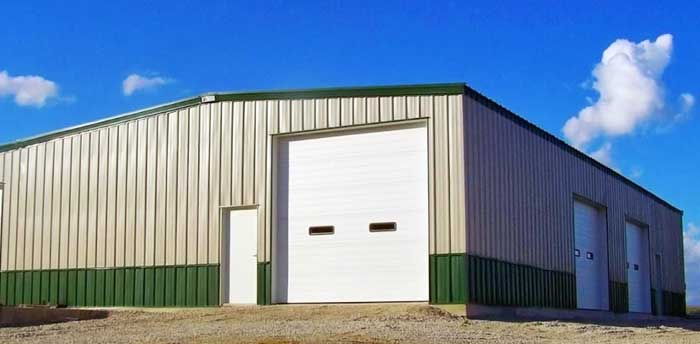In recent years, the emergence of global warming, climate anomalies and other phenomena have led to increasing global attention to environmental protection and sustainable development, and the strategic goal of “carbon neutrality” has been proposed, which shows the necessity and imperative of environmental protection. At the same time, environmental protection and sustainability also pose a huge challenge to mankind. As a pioneer, the construction industry must make changes and seek more innovative and sustainable solutions. As an emerging construction option, prefabricated steel warehouses have become one of the building directions leading the future with their environmentally friendly and sustainable characteristics.
Let’s take a look at why prefabricated steel warehouses can be a priority for promoting environmentally sustainable development.
Table of Contents
Sustainable Materials – Steel
Prefabricated steel warehouses use steel as the main building material. Various components made of steel can be produced in factories, and steel itself is a recyclable material. It is extremely recyclable and reusable, greatly reducing resource waste and reducing environmental burden. Compared to traditional building materials such as concrete or wood, the use of steel is in line with the principles of sustainable development and helps reduce construction waste and consumption of natural resources.
Energy Efficiency and Emission Reduction Benefits
Prefab steel warehouses are becoming increasingly sophisticated in design and production technology, greatly improving energy efficiency. For example, the use of high-quality insulation materials and environmentally friendly coatings effectively reduces the building’s energy consumption. Compared with traditional buildings, steel structure buildings are easier to keep warm in winter and cool in summer during the use phase, reducing energy consumption such as power generation, lighting, and insulation, which helps reduce carbon emissions and mitigate the impact on the environment.
Reduce Waste In The Construction Process
Most of the manufacturing process of prefabricated steel warehouses takes place in the factory. Processing and production are carried out according to the design drawings, which can achieve precise production and material utilization. No construction waste is produced at the construction site, and the construction period is short, and it will not cause noise pollution to the surrounding environment. Compared with traditional building construction, the impact of construction waste on the environment is greatly reduced.
Long-Term Reliability And Low Maintenance Costs
With its excellent durability and stability, steel not only ensures the long-term reliability of steel structures, but also reduces the need for maintenance and repairs. Moreover, with the continuous development and maturity of technology, the corrosion resistance of steel has also been greatly enhanced, allowing steel structure buildings to overcome their own shortcomings, which also means that prefabricated steel warehouses not only reduce maintenance costs during long-term use, but also reduce The consumption of resources is in line with the concept of sustainable development.
Flexibility and Reusability
The design and construction of prefabricated steel warehouses are highly flexible and can be customized according to different needs. In addition, the later transformation of steel structure buildings is also relatively simple, with strong plasticity and recyclability, which can effectively extend the service life of the building and reduce waste and waste of resources.
In Conclusion
From the above aspects, we can see that prefabricated steel warehouse buildings have obvious advantages in environmental protection and sustainability. It complies with the global environmental protection strategy, meets the requirements of human sustainable development, and is more in line with the requirements of environmentally friendly and sustainable development of buildings. Prefabricated steel warehouses are becoming an important driver of sustainability in the construction industry due to their use of sustainable materials, energy efficiency, waste reduction, long-term reliability and flexibility. Its environmentally friendly characteristics and sustainable development advantages make it a leading choice in the construction industry today and in the future, contributing significantly to creating a greener and more sustainable built environment.
Tags: Prefab steel warehouses, prefabricated steel warehouses